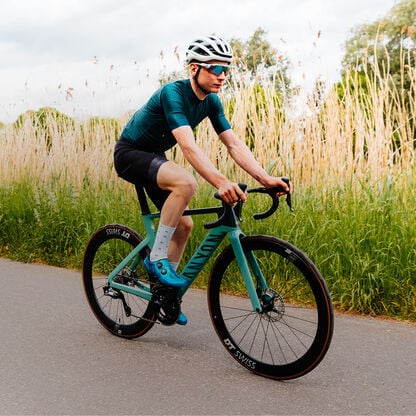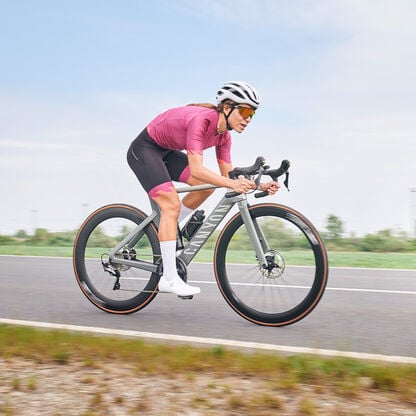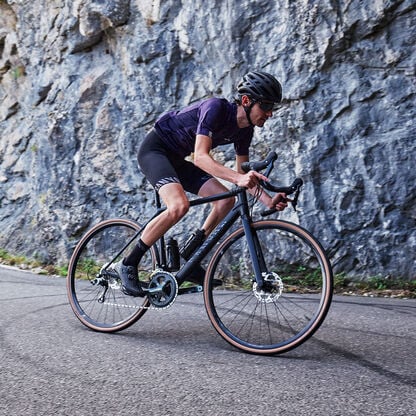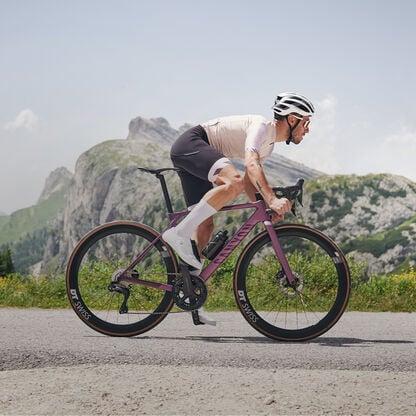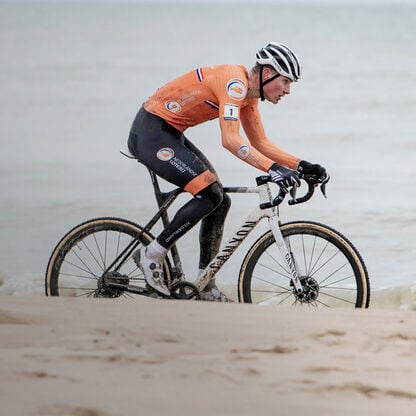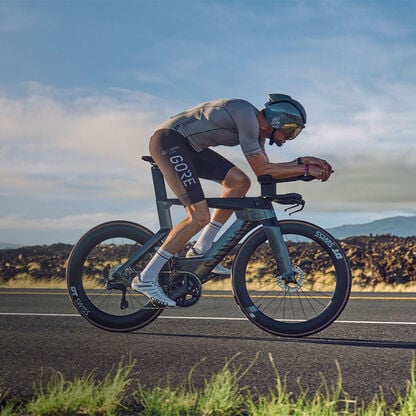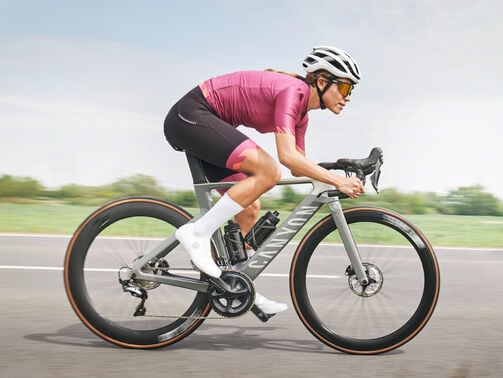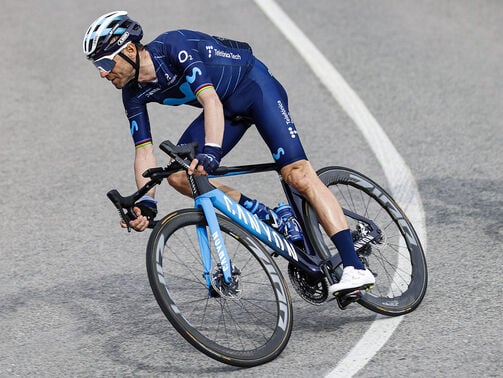Ride faster: Pro tips for speeding up on your road bike
You want to go faster on your road bike? We can help you.
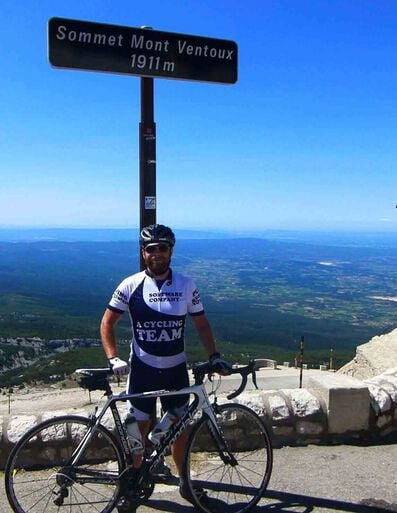

Almost every rider wants to go fast. Whether you’re trying to outsprint your ride buddies to a makeshift finish line or win your category at your local race series, you feel a need for speed. Luckily, Canyon has you covered. Not only is the Canyon Aeroad hailed as the fastest bike in the pro peloton right now (it’s the preferred steed of reigning world champion Mathieu van der Poel), but Canyon’s other models, the Ultimate and Endurace, are pretty fast in their own right as well. If you already own a Canyon, there are ways to make your existing bicycle even faster as well.
Contents
Importance of speed in road biking
You don’t have to race bicycles to want to go faster on one. My days of pinning on race numbers are behind me, but I still like to throw down on a group ride, capture the occasional Strava KOM, and surpass a speed limit on pedal power alone. Like many other riders, I don’t have the time to train like I used to, so I need to find other ways to gain speed.
Road bike setup optimization
The fastest road bike will feel like an extension of your body. Diving into corners or being shoulder-to-shoulder with other riders, you need to know intuitively how your bike will react.
Proper bike fit
You’re making a significant investment with your new Canyon bicycle, but to get the most out of it, you should consider a professional bike fit. Many riders may know where their body needs to be on the bike, but sometimes being a centimeter or two off can lead to pain or loss of optimal power. A professional fitter uses specialized equipment and sometimes even computer software to dial your fit to the millimeter, whether you’re looking to maximize your speed potential, increase your comfort, or help you recover from an injury. A quick internet search will help you find a bike fitter in your area.
Saddle position and height
When setting up your saddle height, measure 88 percent of your inseam height from the top of the saddle to the parallel pedal closest to the ground. Generally, your knee should be bent between 25 and 35 degrees at the downstroke of your pedal stroke for optimal power and efficiency. A too-high saddle will make pedaling much more difficult. A too-low saddle can cause tightness in your hamstrings and lead to a strain.
Saddle position may be the most important part of a bike fit. Per regulations, pro cyclists must have the seat nose a minimum of 5cm further back than the center of the bottom bracket. That’s a good place to start. You’ll generate more power the closer you are to that measurement, pushing down on the pedal instead of outward. However, if that’s not a comfortable riding position, you should incrementally move the saddle backward until it feels right. You may also have to adjust the seat height as you adjust the saddle position. It’ll likely take at least several rides to dial everything into perfection.
Handlebar positioning
Many of the Endurace and Ultimate models boast the Canyon CP0018 adjustable handlebar and stem that allows users 40mm of bar width and 15mm of height adjustability, while eliminating the need to saw off part of the steerer tube. For most riders, this eliminates the need to swap out different stems.
Setting the handlebar lower allows you to tuck into a more aerodynamic position, which in turn, can help increase your speed. A higher handlebar position is more comfortable, reducing the strain on your back and arms. Once again, it’s going to take multiple rides to dial in your ideal position; afterward you may even have to adjust your saddle position yet again.

Aerodynamics as a core factor in bike speed
Proper bike fit is important, but there are other things you can be doing to make your road bike into a virtual race rocket, namely finding (and eliminating) drag and getting more aero.
Reducing drag
When pedaling at10 mph (16 kmh) or faster, air resistance, otherwise known as drag, becomes a cyclist’s worst enemy. When their speed approaches and exceeds 30 mph (48 kmh), about 90 percent of a cyclist’s muscle power is used to combat drag. So, every little bit helps. The new Canyon models have either internal cable routing or wireless shifting to make the bikes as streamlined as possible. (More on this later.)
Clothing and gear choices
Cyclists don’t wear skintight lycra kit just to show off their glutes; baggy clothing creates drag, which slows you down. Some helmets can create unnecessary drag as well, which is why you see some Tour de France teams wearing absolutely ridiculous headgear. When Mathieu van der Poel won Paris Roubaix earlier this year, he wore aero socks, an aero helmet, and more. Even though he wasn’t racing a time trial, he wanted every single advantage to shave off even a millisecond of time. Choose cycling kit like Canyon’s race-fit jersey and bib shorts for the perfect balance of style and function.
Benefits of aero wheels and frames
Canyon’s three road bike choices all benefit from aerodynamic tube construction. The Canyon Aeroad was designed to absolutely slice through the wind, making it one of the fastest bicycles in both the pro peloton and the real world. The more aerodynamic tubes used on the Aeroad will save riders 7.4 watts at 28mph (45kph) compared to previous generations of that model. The tubes on both the Ultimate and Endurace have an aero profile, albeit less pronounced than the Aeroad. With every new generation, Canyon engineers have found new ways to tweak the frames in order to optimize their aero profile. Even the seatposts have been redesigned to keep drag to an absolute minimum.
Equipment and gear
The easiest way to get faster is with a new Canyon bike, of course. But when deciding on what road bike model best suits your needs, here are a few things to keep in mind.
Lightweight components
The lighter the road bike, logic dictates, the faster it is. And that’s true … to a point. Canyon bikes typically come with a choice of SRAM or Shimano gruppos. Shimano 105 and SRAM Rival are the most affordable options, but weigh more than their Ultegra and Force counterparts, which, in turn, are less expensive and heavier than Dura-Ace and Red. The total difference between 105 and Dura-Ace is a little over a pound.
Optimal tire selection and pressure
For typical paved road conditions, the smoother the tire, the better. A tire like the Schwalbe Pro One, found on several Ultimate builds, is made of a special compound that offers lower rolling resistance and more cornering grip in a relatively lightweight tire. Tire pressure should be determined by the road and weather conditions. The more air in your tires, the faster you’ll pedal, but at the cost of a bumpier, rougher ride.
Importance of regular bike maintenance
One of the truest maxims in cycling is “a clean bike is a fast bike.” There’s a reason why pro bike mechanics spend so much time cleaning bicycles after stages. A clean and lubed drivetrain increases your performance by at least 4 percent, according to experts. That might not sound like much, but think about the minute time differences when sprinting for the finish line. That 4 percent can be the difference between just missing the podium and being on the top step. (Cleaning your bike regularly will not only gain you speed, but you’ll also save money; dirt and grime wear away at your cogs and drivetrains, so you have to replace them more often.)

Efficient riding practices in road cycling
While new equipment can help you go faster, there are plenty of other ways you can boost your speed.
Importance of maintaining a steady cadence
Recent studies have found a steady cadence of 80-100 rpms is most efficient for cyclists. (Most beginner riders pedal more slowly, typically 60-80 rms.) Cadences between 80-90 rms are best for ultra-endurance riding when you’re attempting to conserve energy. Racers and riders doing a competitive group ride should aim for a sweet spot between 90-100 rpms, which is optimum for power production.
All that said, if you do race, you should also do some high-cadence drills between 100-120 rms, which will pay off during sprints and attacks.
Using the right gears for different terrains
Today’s bikes offer a terrific gear range for a host of terrains. All three Canyon models offer 11-34 12-speed cassettes that can handle a wide range of terrain, allowing you to ride at a comfortable cadence on all but the steepest of climbs.
Nutrition and hydration for speed
Cyclists have always debated whether it’s better to eat a bit more (adding fuel to your tank) or less (so you’re lighter in the saddle). Your best option may be to eat healthily – mostly plants and fruits – with a good mix of protein, carbs, and healthy fats. The goal is to eat enough to have the energy to finish your ride strong and not bonk before the finish.
According to experts, riders only begin feeling thirsty after their body has already lost two percent of its total water volume, but by that point, their performance has dropped by up to 10 percent. Try to drink at least every 30 minutes on the bike.

Discover our Road Bikes
Did this article help?
Thank you for your feedback
-
 About the author
About the authorRobert Annis
Robert Annis is an award-winning outdoor-travel journalist. As an experienced writer and sport enthusiast he writes content that is inspiring with focus on road biking. You might have read Robert's articles in Bicycling, National Geographic, Outside, Travel + Leisure, Inside Hook, AARP, Midwest Living, Sierra, Hemispheres, Departures, Lonely Planet, Afar, Los Angeles Times, Chicago Tribune, RV Magazine, and Hidden Compass.
